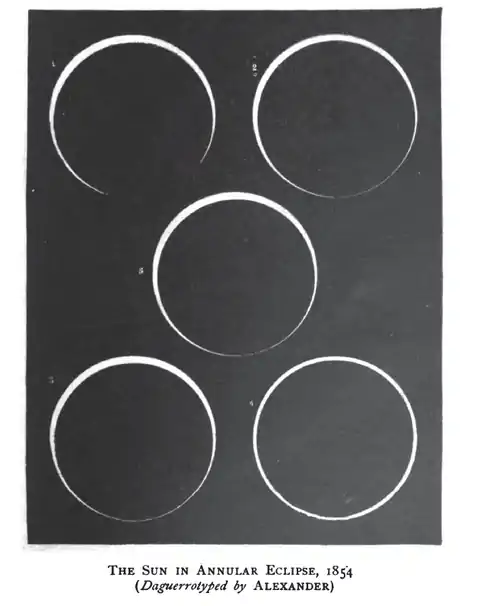Stephen Alexander (astronomer)
Stephen Alexander (September 1, 1806 – June 25, 1883) was a noted American astronomer and educator.
| Stephen Alexander | |
|---|---|
| Born | September 1, 1806 Schenectady |
| Died | June 25, 1883 Mercer County |
| Alma mater | |
| Occupation | Astronomer, university teacher, author |
| Employer | |
Early years
He was born in Schenectady, New York on September 1, 1806.[1] He was the brother-in-law of Joseph Henry, the first secretary of the Smithsonian, and worked closely with him.[2] His education was obtained at Union College, were graduated in 1824, and at Princeton Theological Seminary, were graduated in 1832.[1]
Career
He became a tutor in mathematics at Princeton University in 1832; he would later become professor of astronomy and mathematics and advocate for the construction of Princeton's first observatory.[3] Alexander relied on the assistance of a free African American man named Alfred Scudder, who worked for him at Princeton during the 1850s.[4][5] Because of his role as Alexander's assistant on campus, Scudder received the nickname "Assistant Professor of Natural Philosophy" from students.[4][5]

Alexander was elected an Associate Fellow of the American Academy of Arts and Sciences in 1850.[6] In 1860, he was the head of an expedition to the coast of Labrador to observe the solar eclipse which occurred July 18 of that year, and later to observe the one of 1869.[1]
He was one of the original members of the National Academy of Sciences in 1862, and a member of the American Philosophical Society, and the American Association for the Advancement of Science. He also served as the president of this last organization in 1859. His principal writings are "Physical Phenomena attendant upon Solar Eclipses", read before the American Philosophical Society in 1848; a paper on the "Fundamental Principles of Mathematics," read before the American Association for the Advancement of Science in 1848; another on the "Origin of the Forms and the Present Condition of some of the Clusters of Stars and several of the Nebulae", read before the American Association in 1850; others on the "Form and Equatorial Diameter of the Asteroid Planets" and "Harmonies in the Arrangement of the Solar System which seem to be Confirmatory of the Nebular Hypothesis of Laplace", presented to the National Academy of Science; and a "Statement and Exposition of Certain Harmonies of the Solar System", which was published by the Smithsonian Institution in 1875.[7]
Works
Among many noteworthy astronomical papers he published:[1]
- Fundamental Principles of Mathematics
- Statement and Exposition of Certain Harmonies of the Solar System
References
Citations
Sources
- "Book of Members, 1780-2010: Chapter A" (PDF). American Academy of Arts and Sciences. Retrieved April 14, 2011 – via www.amacad.org.
- Hockey, Thomas (2009). "Alexander, Stephen". The Biographical Encyclopedia of Astronomers. Springer Publishing. ISBN 978-0-387-31022-0. Retrieved August 22, 2012.
- Johnson, Rossiter, ed. (1906). "Alexander, Stephen". The Biographical Dictionary of America. 1. Boston, Mass.: American Biographical Society. p. 77. Retrieved November 19, 2020 – via en.wikisource.org.
 This article incorporates text from this source, which is in the public domain.
This article incorporates text from this source, which is in the public domain. - Leonard, John William; Marquis, Albert Nelson, eds. (1963), Who Was Who in America: Historical Volume 1607-1896, Chicago: Quincy Who's Who
- "Stephen Alexander". National Academy of Sciences. Retrieved December 19, 2017 – via www.nasonline.org.
- Yannielli, Joseph (November 6, 2017). "African Americans on Campus, 1746–1876". The Princeton & Slavery Project. Retrieved December 19, 2017.
- Princeton University (November 6, 2017). "Alfred N. C. Scudder". The Princeton & Slavery Project. Retrieved December 19, 2017.
